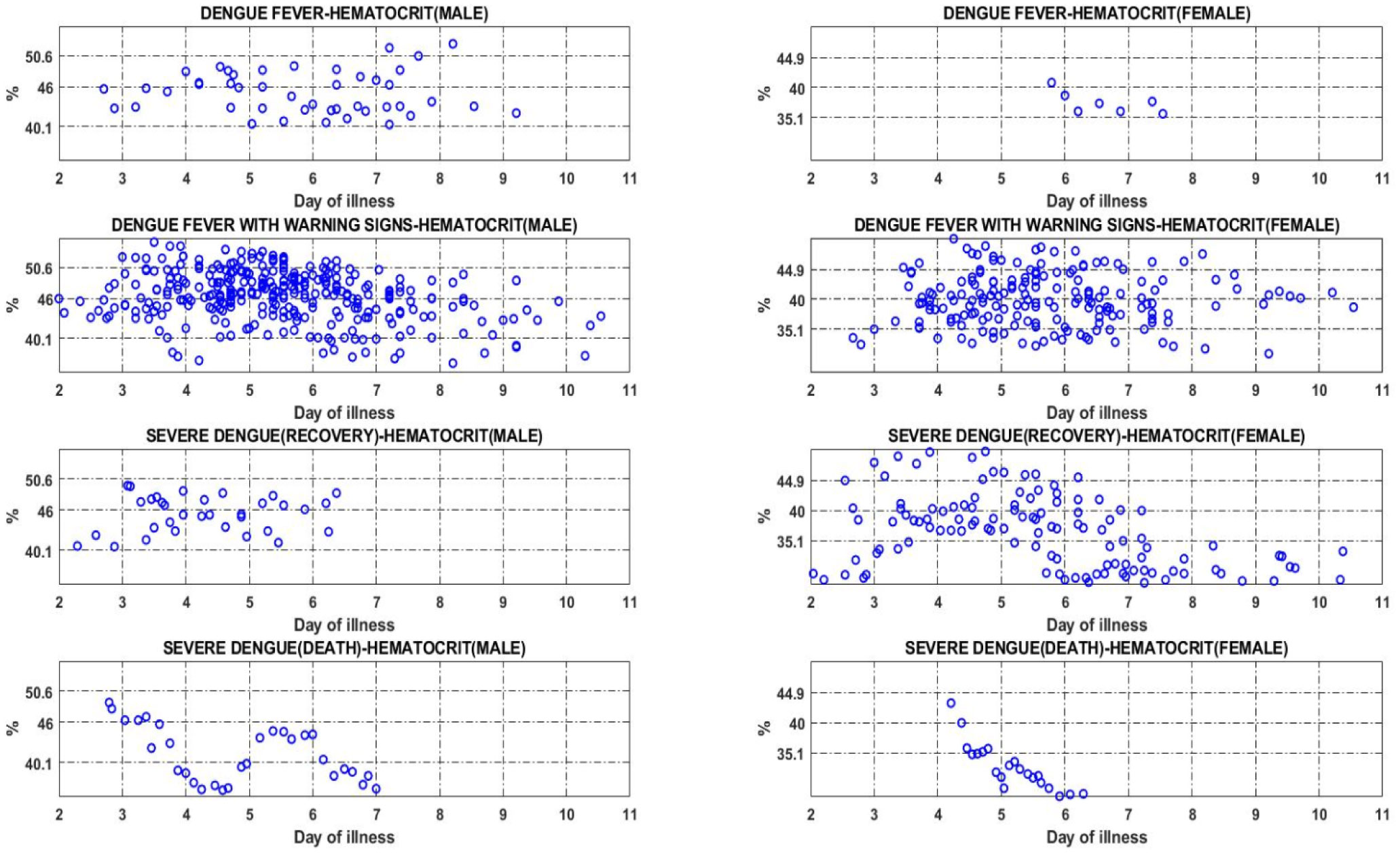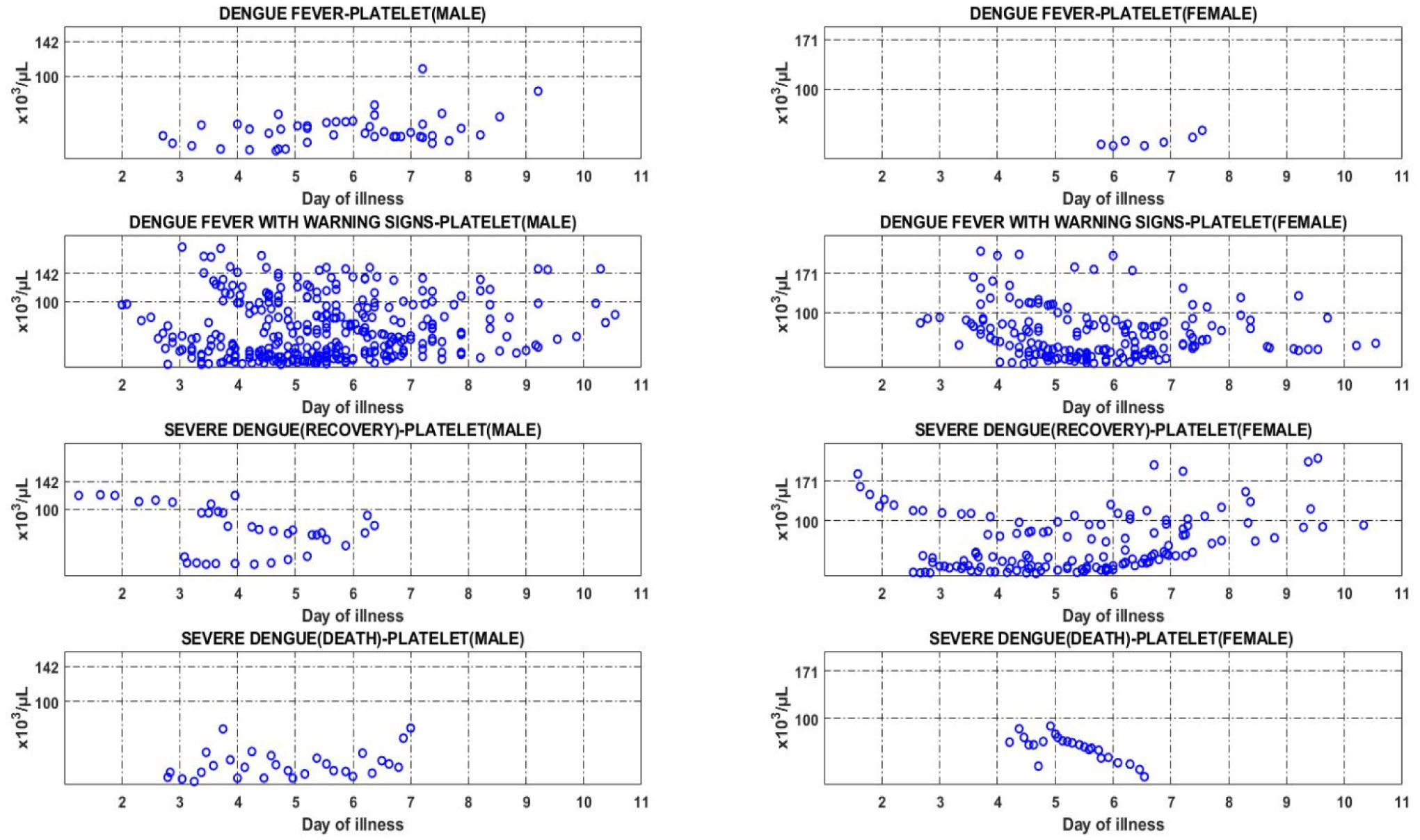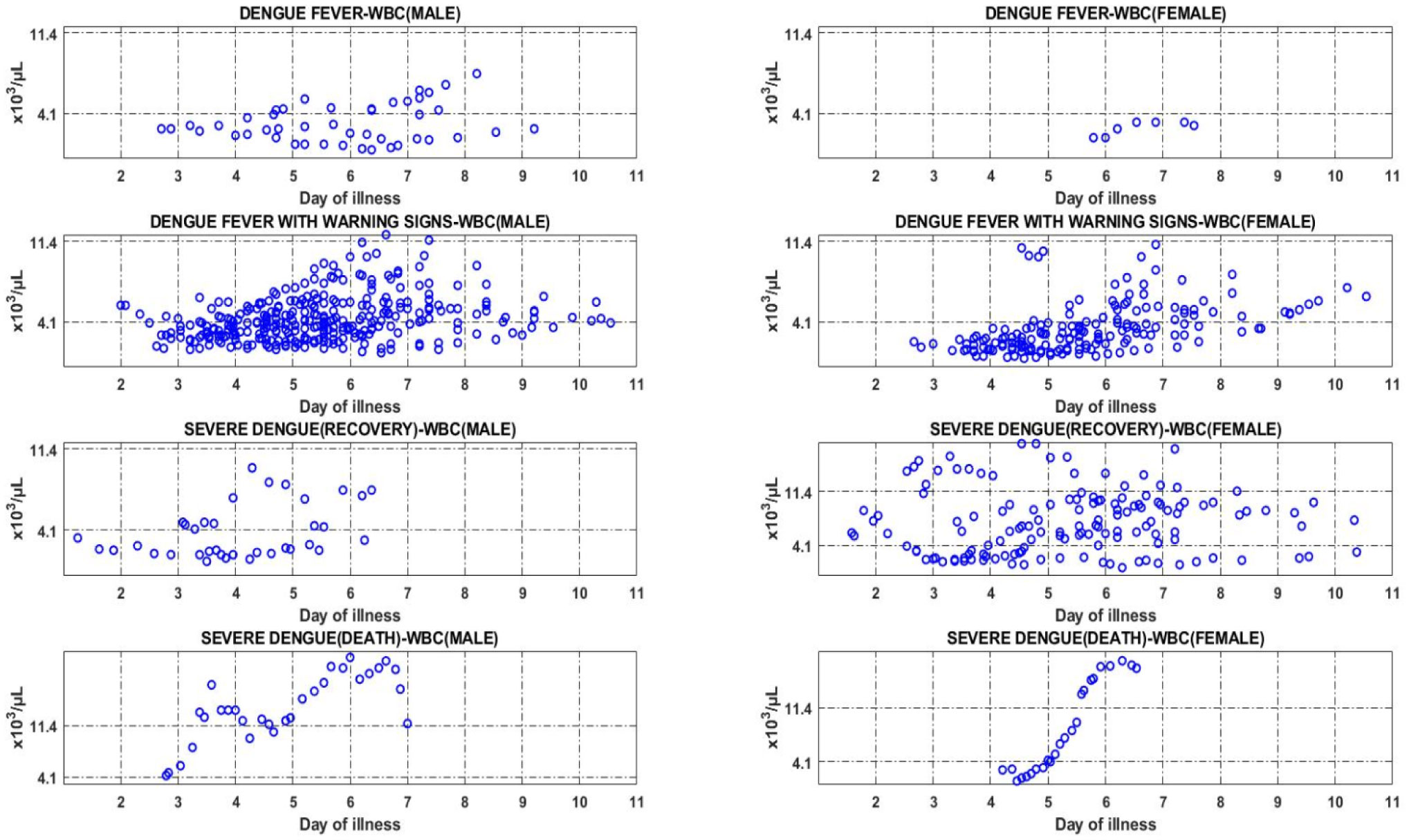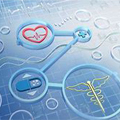1.
Introduction
Dengue fever is an acute febrile disease caused by the dengue virus, transmitted to humans through the bites of infected female Aedes aegypti mosquitoes [1],[2]. The disease is one of the top five reported diseases in Malaysia [3]. Ministry of Health of Malaysia reported 111,285 dengue cases, with 301 deaths, to the World Health Organization (WHO) in 2015. Malaysia iDengue community portal reported 51,665 dengue cases, with 117 deaths in the first half of 2016 alone, from January 3rd to June 18th [4]. Infection by any of the dengue virus serotypes (DENV-1 to -4) confers a lifelong immunity against the specific serotype of the virus, but not against the others [5],[6]. To improve on triage and case management for dengue fever, classification is made as updated by WHO in 2009 as follows: dengue fever without warning signs (DF), dengue fever with warning signs (DFWS), and severe dengue (SD) [7],[8].
The three dengue categories are classified into Group A, Group B and Group C for dengue case management [9]. The classification is made based on the severity of dengue, the clinical signs and circumstances of the patient [5],[10]. Dengue patient with stable haematocrit reading, without any warning signs, such as abdominal pain or tenderness, persistent vomiting, clinical fluid accumulation, mucosal bleed and lethargy, are classified as Group A. Patients of this group are usually instructed to self-monitor at home, and to refer to the hospital should any warning signs start to develop [10]. Group B refers to patients with warning signs, who need to be monitored at the hospital [9],[10], while Group C refers to those with severe dengue, who require emergency treatment [10].
There are three clinical phases of dengue infection following an incubation period of 4–10 days: febrile, critical, and recovery [11]. During the febrile phase, patients progress into high-grade fever, i.e., body temperature between 39 °C and 40 °C, with facial flushing, headache, myalgia and gastrointestinal symptoms that last for typically two to seven days [7],[12]. The dynamic nature of dengue makes the symptoms of severity observable during defervescence, which correlate with the onset of critical phase [10]. If defervescence occurs, around day three to seven of illness, the patient might enter the critical phase, a point which most mortality events occur [13],[14]. During this phase, increase in haematocrit (HCT), followed by a rapid decrease in platelet (PLT) counts, precedes plasma leakage—increase in HCT above the baseline often reflects the severity of plasma leakage [15],[16]. In terms of vital signs, an increase in DBP variable and the narrowing of PP <20 mmHg, are also identified as signs of plasma leakage in dengue [5],[17]. Patient who survives the critical phase, which lasts for 24 to 48 hours, will enter the recovery phase, during which the white blood cell (WBC) count increases for a period of 2 to 3 days [18],[19].
Monitoring the vital signs and blood profile in the diagnosis of dengue helps in keeping track of the disease progression, from the febrile stage to critical stage. The collected data can be useful as a reference to establish an effective supportive intervention in the management of dengue fever.
2.
Methods
2.1. Data collection and patient selection
Clinical data in this study were obtained from a database of patients who were present at HCTM Emergency Department between January 2015 and January 2016, suspected of dengue fever and admitted to the wards for monitoring (HCTM casemix classification A90 for “dengue fever” and A91 for “severe dengue”). Only patients with the following criteria were selected: a Malaysian citizen aged between 15 to 60 years old; confirmed with acute dengue infection through laboratory tests, either positive for the NS1 antigen or the dengue IgM antibodies tests; and does not have premorbid conditions such as diabetes, pregnancy, renal failure and HIV. Patient information was checked using the emergency department observation logbook; the related information was collected from medical records using the MRN number. Information about the variables associated with the baseline vital signs of the patient were obtained from the patient registration form at the emergency department; data related to the vital signs were retrospectively obtained from the patient's dengue charts; the blood profile was obtained from the HCTM online database. The study was approved by the Research Ethics Committee of HCTM (UKM1.5.3.5 /244/FKAB-2015-03).
2.2. Data preparation and presentation
Medical physicians who attended the patients classified the cases according to WHO guidelines and the Malaysian Clinical Practice Guideline (CPG) for dengue [5],[7]. To facilitate the analysis, in addition to the DF and DFWS classifications, the severe dengue classification was further divided into “severe dengue with recovery” and “severe dengue resulting in death”, abbreviated as SD(R) and SD(D), respectively.
Once the appropriate information was collected, the Microsoft Excel 2010 was used to sort the disease information for each dengue fever classification. Kruskal-Wallis Test was used to analyse the collected data using IBM SPSS V23 based on the non-parametric nature of the data. Graphical analysis and presentation were performed using MATLAB version R2020a. To construct the blood profile graphs, the day of illness was represented on the x-axis, while the minimum and maximum standard reference values for the blood profiles were represented on the y-axis. There are three y-tick lines in the HCT graph to indicate the minimum and maximum value, and the median baseline. The normal range of HCT for males and females are dissimilar; the range of HCT for males is between 40.1% and 50.6%, and for females, it is between 35.1% and 44.9%. The median baseline was included as it is an indicator of plasma leakage in dengue infection [7]; the medians for males and females are 46% and 40%, respectively, according to the Malaysian CPG for dengue [5]. For the PLT count, two y-tick lines were assigned, whereby the top number is the actual minimum value of PLT, i.e., 142 × 103/µL for males and 171 × 103/µL for females. The trend in PLT count may decrease below the minimum level during dengue infection. To indicate plasma leakage [20], a second, lower value of 100 × 103/µL was included in the graph. The y-ticks on the WBC count graph represents the minimum (4.1 × 103/µL) and maximum (11.4 × 103/µL) value for both sexes.
3.
Results
In this study, 63 dengue patients registered at the emergency department for admission to HCTM between Jan 2015 and Jan 2016 were selected. The spectrum of dengue fever was described by the selected patients, which met the screening criteria. Sample characteristics and laboratory results according to the different classifications are summarized in Table 1. Figures 1 to 3 show the trend in the blood profile based on the identified variables according to the established classification of dengue fever.
There are 6 patients who were classified as those with dengue fever without warning signs, of which five are males and the remaining one is female. There is no specific trend observed in the HCT graph of male patients—while some of the patients had high level of HCT (>46%), others' were below the baseline; decrease in the level of HCT below the baseline (<40%) occurred on the day 6 of illness, in the only female patient in the group. On the other hand, there are 44 patients who were classified as having dengue fever with warning signs, of which 28 are males and 16 are females. The level of HCT in most male patients was above the baseline from day 3 to day 7 of illness, however, there is no observable trend identified for both sexes. There are 11 patients, 3 males and 8 females, identified as those with severe dengue (recovery). In the male patients, there was an increment in the level of HCT—an increase from a value lower than the median on day 2 of illness to a value higher than the median baseline on the day 3. The HCT graph for female patients shows a different trend—increase in the value from day 2 of illness was followed by a decrease in value below the minimum (35.1%), from day 7 onwards. There are only two patients, one of each sex, who were classified as having severe dengue (death). The graph of HCT level for the male patient shows a sinusoidal trend, with HCT above the median on day 2 and 3 of illness; the level of HCT was also higher than the median in female patients on day 4 of illness, but dropped below the minimum value from day 5 of illness onwards.
The graph of platelet count in both males and females dengue patients in DF category shows a trend that signifies a count below the minimum level (100 × 103/µL) during the infection. In patients belong to dengue fever with warning signs category, a distinctive U-shaped trend can be observed in the PLT count of female patients throughout the period of illness. Based on the graph, decrement in the PLT count in most of the male patients is observed from day 2 to 6 of illness, followed by increment from day 7 to 11; as for female patients, decreasing trend is observed on day 3 of illness, followed by increasing trend from day 7 onwards. The graph shows that there is a decreasing trend in PLT count to a value below 100 × 103/µL in male patients in the group with severe dengue (recovery) on day 3 of illness, followed by increasing trend on day 5; drop in PLT count in female patients started earlier than the male patients, followed by increment from day 6 of illness onwards. In the case of severe dengue (death), patients of both sexes had low PLT count below the minimum value of 100 × 103/µL.
Figure 3 shows that there is small improvement in WBC count of male patients classified as having dengue fever without warning signs, starting on day 4 of illness; WBC count for the only female patient in the group was below the minimum level throughout the admission. Patients of both sexes classified as having dengue fever with warning signs displayed an improvement in WBC count, with the value approaching the minimum reference value of 4.1 × 103/µL, beginning from the day 3 of illness. The WBC count in male patients with severe dengue (recovery) was lower than the minimum reference value during admission, but increased to normal level from day 3 onwards; as for females, there is no specific trend observed in WBC count. WBC graphs of both male and female patient with severe dengue (death) demonstrate an increasing trend in the count to a value higher than the maximum level, starting on day 3 and day 5 of illness for male and female patient, respectively.
3.1. Statistical analysis
To determine the significant difference (p < 0.05) in the vital signs and blood profile of the patients in the four categories of dengue, a Kruskal-Wallis analysis was carried out from day 3 to day 8 of illness, considering that the critical phase often begins after 72 hours of fever, or when defervescence occurs [17],[21]. Tables 2 to 4 show the median value of the blood profile and vital signs according to the day of illness. In general, differences in all variables associated with vital signs are statistically significant except for pulse pressure (PP).
There is a statistically significant difference in the heart rate (HR) of dengue patients of different categories on day 3 of illness, with p-value of 0.030 and median of 64 for DF, 89 for DFWS, 109 for SD(R) and 115 for SD (D) category. On day 4 of illness, the significant difference in PLT and WBC counts can be observed in female patients of DFWS and SD(R) category: PLT count with p-value of 0.028 and median of 90 for DFWS and 19 for SD(R) category; and WBC count with p-value of 0.019 and median of 1.8 for DFWS and 2.9 for SD (R) category.
On day 5 of illness, there is a statistically significant difference in the HR, body temperature (BT) and diastolic blood pressure (DBP) of dengue patients of different categories. A p-value of 0.011 was recorded in the HR, with medians 71 (DF), 82 (DFWS), 93 (SD(R)) and 107(SD(D)). As for BT, a p-value of 0.019 was recorded with a median of 37.2 for DF, 38.1 for DFWS, 37 for SD(R) and 35.3 for SD (D) category. A p-value of 0.016 in DBP was generated from a median of 56 for DF, 70 for DFWS, 71 for SD(R) and 52 for SD (D) category.
There is a significant difference in the HR, systolic blood pressure (SBP) and DBP of dengue patients of all categories on day 6 of illness. A p-value of 0.015 was recorded for HR, with a median of 74 for DF, 79 for DFWS, 89 for SD(R) and 120 for SD(D) category. As for SBP, the p-value was recorded as 0.006, with medians 109 (DF),117 (DFWS), 103 (SD(R)) and 94 (SD(D)). A p-value of 0.027 was recorded in DBP with medians 60 (DF), 66 (DFWS), 64 (SD(R)) and 46 (SD(D)).
On day 7 of illness, there is a significant difference in HR, with a p-value of 0.011 and median of 73 for DF, 76 for DFWS, 81 for SD(R) and 118 for SD (D) category.
Lastly, on day 8 of illness, there is a statistically significant difference in the HCT level of female patients of DF, DFWS and SD(R) category; the p-value was recorded as 0.023 with a median of 36.7 for DF, 39.2 for DFWS and 32.4 for SD(R) category.
4.
Discussion
Most dengue research on hemodynamic variable patterns have focused on age, with some research restricted to the contrasts between severe and non-severe cases [22],[23]. Analysis presented in this paper relates the trends in vital signs and blood profile of patients with different categories of dengue fever to the day of illness [7]. The variable, BT is used as an indicator that signifies the beginning of critical phase, which is characterized by a sudden drop in body temperature or occurrence of defervescence [7]. Previous research in Singapore reported a statistically significant difference in BT of patients with DF and dengue haemorrhagic fever [23]. In this study, a significant difference in BT (p = 0.019) has been observed on day 5 of illness in dengue patients of all categories. Female patients selected in this study have been found to be associated with more severe dengue cases compared to male patients, as supported by previous study [21],[24],[25].
Based on the analysis, there is a significant difference in SBP (p = 0.006) of patients with different categories of dengue on day 6 of illness, which is the critical phase of the disease. Similarly, a previous study reported a p-value of 0.001 in SBP of patients with different categories of dengue; however, the study was conducted based on the 1997 dengue fever classification (DF, DHF and DSS) [26]. Platelet activation can be one of the mechanisms that lead to platelet dysfunction and increased capillary permeability in dengue patients during the critical phase [27]. As for the blood profile, plasma leakage can be caused by haemoconcentration or increment in the level of haematocrit. Increase in the level of HCT is in parallel with the decrease in the PLT count of patients with SD(R) and SD(D), as shown in Figures 1 and 2 [28]. The trend observed in this study is in accordance with the WHO guidelines, which state that increase in HCT occurs simultaneously with decrease in platelet count [29]. Hypovolemic shock can result in organ impairment and severe haemorrhage.
A shock occurs when significant volume of plasma is lost through leakage, causing HCT to decrease, the WBC count to increase, and the BT to become subnormal [7], as observed in patients with SD(D). Tachycardia is also a sign of compensated shock in severe dengue [5]. Results from analysis on the vital signs and blood profile of patients classified as SD(D) demonstrate that the HCT level in the patients of this category is lower than the minimum value, while the WBC count is high (>11.4 × 103 µL) with subnormal BT recorded (i.e., the lowest BT recorded for male patient is 35.2 °C, and for female patient, 36.2 °C). According to statistical analysis, a clear trend can be observed in the HR of patients with all categories of dengue, as observed during the critical phase of the disease on day 3, 5, 6 and 7 [17],[21]. This discussion focuses on clearly visible trends and compare the results to the previously published findings. The fact that the patients could be at any stage of their illnesses, and the possibility of untimely admission or release of patients present a challenge in determining the trend in the variables investigated in this study. During the course of the disease progression, the illness may develop differently in individual patient depending on their immune response toward the virus and treatment procedures.
5.
Conclusion
This study has found that HR is an essential indicator that varies in patients with different categories of dengue in most of the days throughout the disease progression. It has also been found that the daily trend of HCT is similar in dengue patients of all categories. In addition, a clear trend in PLT and WBC count can be observed in patients with DF, DFWS and SD(R), whereby the WBC count increases prior to the increase in PLT count. Finally, a significant difference in HCT, PLT, and WBC has been observed only in female dengue patients.









 DownLoad:
DownLoad:






